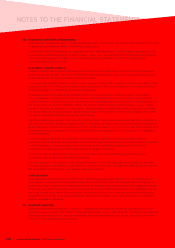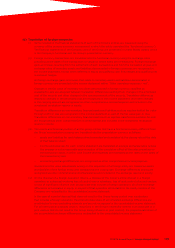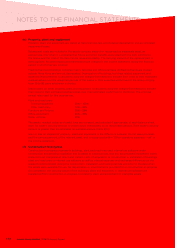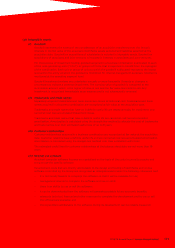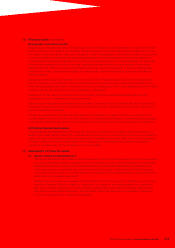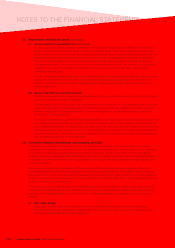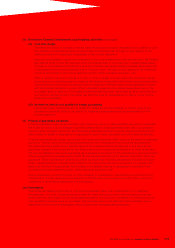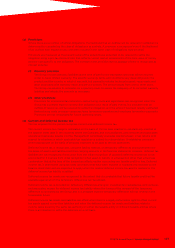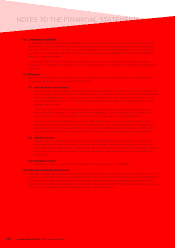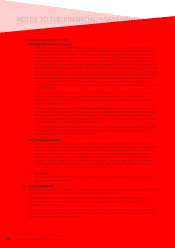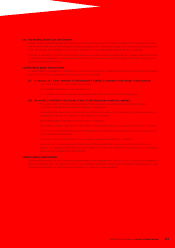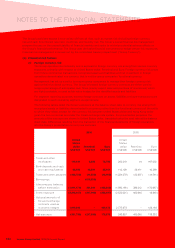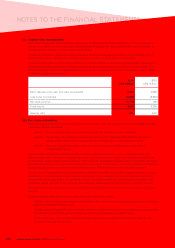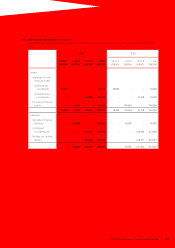Lenovo 2016 Annual Report Download - page 179
Download and view the complete annual report
Please find page 179 of the 2016 Lenovo annual report below. You can navigate through the pages in the report by either clicking on the pages listed below, or by using the keyword search tool below to find specific information within the annual report.
177
2015/16 Annual Report Lenovo Group Limited
2 SIGNIFICANT ACCOUNTING POLICIES (continued)
(s) Provisions
Where there are a number of similar obligations, the likelihood that an outflow will be required in settlement is
determined by considering the class of obligations as a whole. A provision is recognized even if the likelihood
of an outflow with respect to any one item included in the same class of obligations may be small.
Provisions are measured at the present value of the expenditures expected to be required to settle the
obligation using a pre-tax discount rate that reflects current market assessments of the time value of money
and the risks specific to the obligation. The increase in the provision due to passage of time is recognized as
interest expense.
(i) Warranty provision
The Group records warranty liabilities at the time of sale for the estimated costs that will be incurred
under its basic limited warranty. The specific warranty terms and conditions vary depending upon the
product and the country in which it was sold, but generally includes technical support, repair parts and
labor associated with warranty repair and service actions. The period ranges from one to three years.
The Group reevaluates its estimates on a quarterly basis to assess the adequacy of its recorded warranty
liabilities and adjusts the amounts as necessary.
(ii) Other provisions
Provisions for environmental restoration, restructuring costs and legal claims are recognized when: the
Group has a present legal or constructive obligation as a result of past events; it is probable that an
outflow of resources will be required to settle the obligation; and the amount has been reliably estimated.
Restructuring costs provision comprises lease termination penalties and employee termination payments.
Provisions are not recognized for future operating losses.
(t) Current and deferred income tax
The tax expense for the period comprises current and deferred income tax.
The current income tax charge is calculated on the basis of the tax laws enacted or substantively enacted at
the balance sheet date in the countries where the Company and its subsidiaries, joint ventures and associates
operate and generate taxable income. Management periodically evaluates positions taken in tax returns with
respect to situations in which applicable tax regulation is subject to interpretation. It establishes provisions
where appropriate on the basis of amounts expected to be paid to the tax authorities.
Deferred income tax is recognized, using the liability method, on temporary differences arising between the
tax bases of assets and liabilities and their carrying amounts in the financial statements. However, deferred tax
liabilities are not recognized if they arise from the initial recognition of goodwill; deferred income tax is not
accounted for if it arises from initial recognition of an asset or liability in a transaction other than a business
combination that at the time of the transaction affects neither accounting nor taxable profit or loss. Deferred
income tax is determined using tax rates (and laws) that have been enacted or substantively enacted by the
balance sheet date and are expected to apply when the related deferred income tax asset is realized or the
deferred income tax liability is settled.
Deferred income tax assets are recognized to the extent that it is probable that future taxable profit will be
available against which the temporary differences can be utilized.
Deferred income tax is provided on temporary differences arising on investments in subsidiaries, joint ventures
and associates, except for deferred income tax liability where the timing of the reversal of the temporary
difference is controlled by the Group and it is probable that the temporary difference will not reverse in the
foreseeable future.
Deferred income tax assets and liabilities are offset when there is a legally enforceable right to offset current
tax assets against current tax liabilities and when the deferred income tax assets and liabilities relate to
income taxes levied by the same tax authority on either the taxable entity or different taxable entities where
there is an intention to settle the balances on a net basis.



